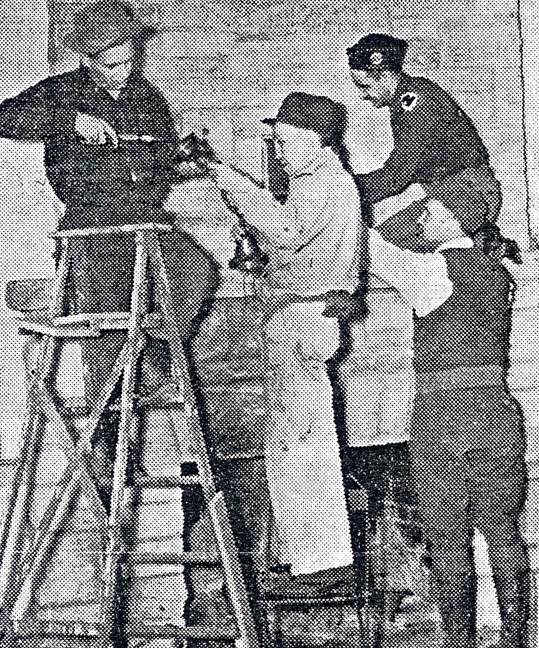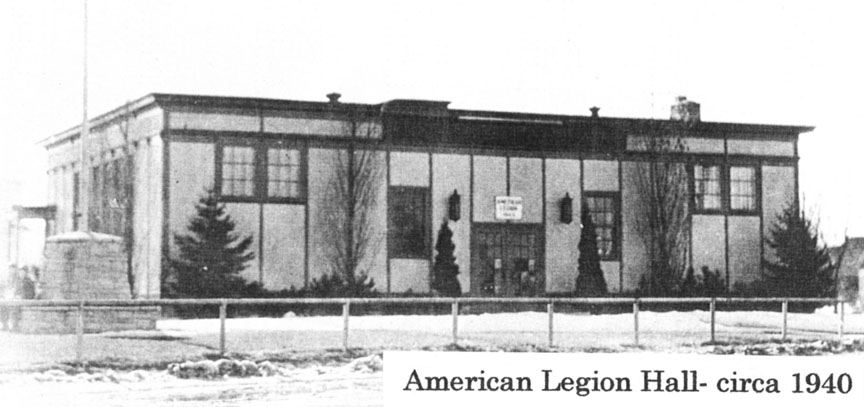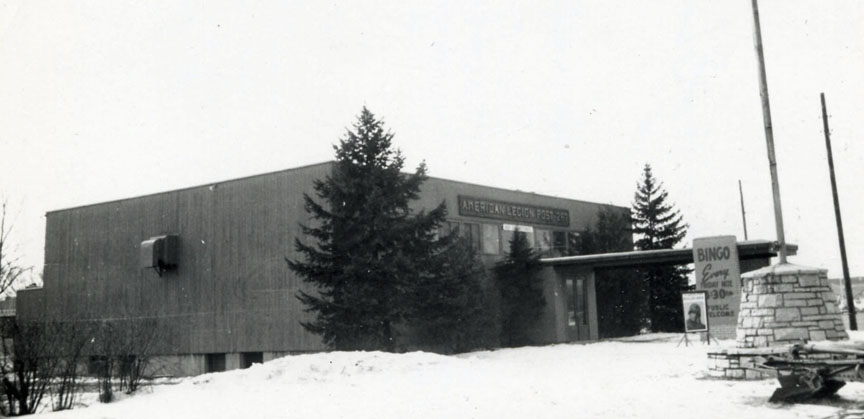The Frank Lundberg American Legion Post #282 was chartered with 30 members on December 16, 1919. Frank Lundberg was a Park soldier who died in France during WWI. The American Legion was founded that same year by Grayson Murphy, who was a director of the House of Morgan. One of its goals was to “offset radicalism,” which was quite in step with the times in 1919. That year, the national American Legion convention was held in Minneapolis, from November 10-12.
The Lundberg Post soon foundered, and in 1931 a different group of 13 men, also veterans of WW I, obtained a temporary charter on February 14, 1931. The purpose of the Post as a service organization “is to promote Americanism, patriotism, and to provide for the needs of our youth and children.”
The Post first met on October 5, 1931, on the second floor of the Walker Building. Hume McKay was the first Commander.
Also on that date, Unit 282 of the American Legion Auxiliary received its charter, with 33 members. The pledge of allegiance was given to a flag presented by Albert Lundberg, Lillian Brown, and Edla Fesler, siblings of Frank Lundberg.
In October 1936, the Legion, under the leadership of Commander Keyt, purchased a grade school building in Edina/Morningside. The building was a four room portable building that Edina purchased from the City of Minneapolis and placed at 45th and Grimes. It was moved to a site where the Legion had dug a basement at the corner of Excelsior and Xenwood. The address then was 5700 Excelsior Blvd., now 5707 Excelsior Blvd. Legend has it that they could not get a permit to move it, so it was moved under the cover of night.
90 percent of the work in fixing up the old school was done by the members, with Shorty Swanson contributing his carpentry skills. Young Ferris Keyt remembers making plugs for “what seemed like many thousands of holes left after all the desks were removed.” The main floor had a ballroom and club room, and the basement had a kitchen, club room, workshop, and dining room. The building was dedicated on December 18, 1937, under the leadership of Commander Frank Bye.

One of the main fundraising activities of the Legion was to sell fireworks for the Fourth of July. In the 1930s, young Keyt had a memorable time guarding the stand at the intersection of Wooddale and Vernon all night.
In about 1938 the St. Louis Park Social Club was formed, sponsored by the Legion. Its purposes were “sociability, educational, entertainment, and the selling of St. Louis Park to ourselves through presentation of important facts pertaining to the Park.” The club was “non-political and non-sectarian” and met for eight lectures per year at the Legion Hall.

By 1946 the Post reported that it was free of all debt, and the Legion Hall was abuzz with meetings, bingo, and dances. The “junior members,” i.e., the 100 World War II vets, were planning a dance for Washington’s Birthday: “It will be staged the way young people like them with some jive and plenty of fun in prospect.”
In 1955 the Dispatch reported that the Post was looking to either expand its present facility or sell it and build in another location. The expansion considered was a $250,000 addition on the east side.

1962 marked the beginning of the group’s collection of early American flags. Post members did research on various flags used in America’s history, and the designs were made up by a local flag manufacturing firm. Over the years, some of the flags have been vandalized or stolen.
The Legion Hall burned down in 1971 and was replaced by a new two-story building in 1973, built by the Rutledge Construction Co. of Hopkins. At that time the Post also owned a house at the end of Xenwood, a house on Excelsior, and under Commander John Kain, built a service station on tax forfeited land on Excelsior (now Batteries Plus).
Unfortunately, the Post went into a financial tailspin and was forced to sell off its properties. The Post filed for bankruptcy on April 7, 1992. Members blamed changes in the state’s gambling laws for their financial straits – new regulations curtailed Bingo games and profits. This was a time when many area American Legion and VFWs were losing their charters, merging, or closing.

Loffler Properties, which had rented space from the Legion, took over the building in about 1995. The Legion met at the VFW for many years, and on July 1, 2005, took over the VFW building at 5606 W. 36th St.
To be a member of the American Legion, one must have served during the following dates:
- April 6, 1917 to Nov. 11, 1918 (World War I)
- Dec. 7, 1941 to Dec. 31, 1946 (World War II)
- June 25, 1950 to Jan. 31, 1955 (Korean War)
- Feb. 28, 1961 to May 7, 1975 (Vietnam War)
- Aug. 24, 1982 to July 31, 1984 (Lebanon / Grenada)
- Dec. 20, 1989 to Jan. 31, 1990 (Panama)
- Aug. 2, 1990 to today (Gulf War / War On Terrorism)
The national American Legion web site is located at www.legion.org. Also see the memoir written by Ted Dietrick and Don Swenson in Something in the Water.
